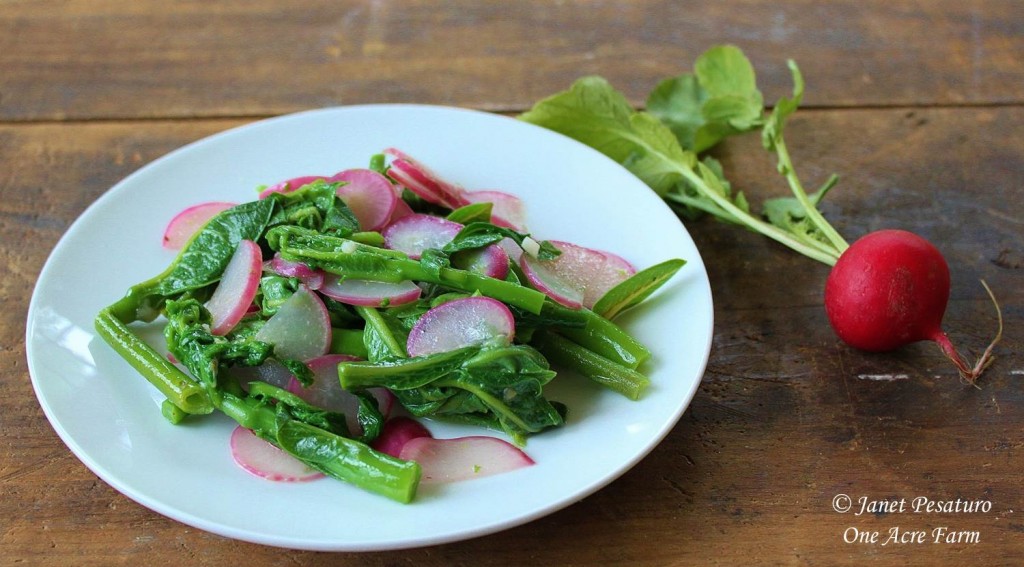
Milkweed radish salad, made with shoots of common milkweed, Asclepias syriaca, makes a nice milkweed meal.
It’s time to stop calling common milkweed (Asclepias syriaca) a weed. And to stop treating it like a weed. Let it grow in your garden, because it’s got a lot to offer. I was welcoming it in our perennial garden long before it was fashionable to do so. The flowers are beautiful, the pods are fascinating, and it’s prime feeding habitat for pollinators and for monarch butterfly larvae. But I was astonished to learn that it’s also edible! Several parts of the plant are edible, but I am focusing on the shoots because we like them, and because picking them is a convenient way to control the plant in our garden in spring.
Scroll down to the end for the recipe, if you already know how to ID common milkweed.
Milkweed meal? Doesn’t that deprive wildlife of an important resource?
Yes. Whatever you pick, they don’t get to eat. We’ve all heard about the plight of monarch butterflies, and many other species use milkweed, too. That’s why foragers should contribute towards wildlife conservation. Hunters contribute a lot towards wildlife conservation through the purchase of hunting licenses. But at this point in time, foragers do not. See my post on Foraging Ethic, and consider the following, if you harvest milkweed:
- Allow milkweed to grow in your garden (We limit our foraging of this plant to what it takes to keep it from crowding out other plants. Instead of throwing these “weeds” into the compost, we eat them.)
- Check out Monarch Watch, where you will find many ways to contribute towards monarch butterfly conservation
- Check out the Xerces Society, where you will find many ways to contribute towards pollinator conservation.
My hope in encouraging this as a wild edible is for a positive impact on monarch and pollinator conservation: If people value milkweed as a food plant, perhaps they will stop treating it as a noxious weed and let it grow in their yards.
Where to find common milkweed
It’s found over much of eastern North America, and then some, as you can see in this range map. It will grow in poor soil, but really thrives in rich soil, and can be found in fields and along roadsides. It’s very common and so distinctive, that it’s probably one of the best recognized “weeds” within its range. However, to be sure you are not reducing food available to pollinators, it’s best to let milkweed grow in your own yard, and eat the thinnings (see above).
How to identify common milkweed
If you plan to eat the shoots and you are not experienced in plant identification, the best way to be sure you have common milkweed is to watch it grow through the previous season, so you can observe it from shoot, to flower, to pod. It’ll grow back in the same place next spring, and you will know with confidence that you’ve got the right plant.
Even so, you should confirm identification of common milkweed, Asclepias syriaca, with at least one other source before eating it. There are many species of milkweed, and not all are edible. The classic guide for identification of flowering plants is this one: Newcomb’s Wildflower Guide
A thorough description of common milkweed and its edible parts can be found in one of my favorite foraging books, the one where I first learned that common milkweed is edible: The Forager’s Harvest: A Guide to Identifying, Harvesting, and Preparing Edible Wild Plants
Shoots
Asclepias syriaca can grow to 6 ft tall in good garden soil (usually reaches only about 4 feet). But pick the shoots when they are only a few inches tall, with just a few young leaves. Here in MA, common milkweed shoots begin to emerge in early May. A sticky, milky white substance bleeds out when you pick them.
Leaves
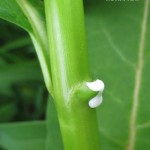
Sticky, milky white substance bleeding from where a leaf was picked from the stem of common milkweed.
The thick, slightly fuzzy leaves are long and oval, with smooth edges. They are oppositely arranged on the stem, and grow to about 10 inches in length and 6 inches in width, in my rich garden soil. They are smaller when growing in poorer, sandy soil.
Sticky, milky white substance bleeds out of the stem and the leaf stalk, when you pick the leaves.
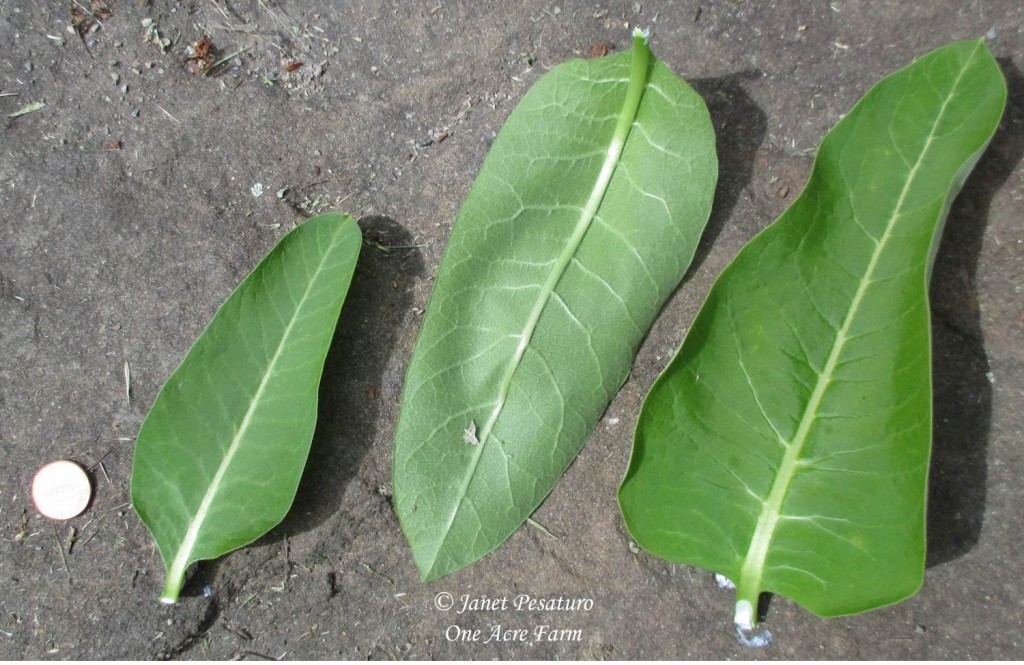
Leaves of common milkweed, with a penny for scale. Note the white milky substance leaking out of the leave on the far right,
Flower buds
These tight clusters are edible, but we don’t eat them. The reason is that by the time they appear, we have already thinned the milkweed in our garden to where we want it, by eating the shoots.
Flowers
Those tight clusters of green buds eventually open into those familiar 2-3 inch diameter balls (“umbels”) of pale pinkish-purplish flowers. The flowers turn slightly yellowish after they are pollinated.
Pods
Small, immature milkweed pods with soft, white pre-silk are said to be edible, but I have no experience with that, so I have no recommendations about eating them. The pods look like this. I find the pods so fascinating, that I want to see them develop and can’t bear to pick them. In late summer and fall, pods open to reveal those familiar dark brown seeds with silky fluff, which carries them away in the wind. The dried pods also have tremendous ornamental value in the fall and winter garden, in my opinion.
And now for a simple recipe using common milkweed shoots:
Milkweed radish salad
Much has been written about the safety and flavor of common milkweed. Author and nationally known forager Sam Thayer pretty much dashed past claims of bitterness and extreme toxicity, and I suggest you read his account and make your own informed decision. He still recommends boiling for 20 minutes, but I have eaten milkweed shoots many times, after boiling for only 5 minutes, with no ill effects and no trace of bitterness. Many other foragers have consumed the shoots and other parts of this plant after simple boiling, with no ill effects. Some don’t boil them at all. In fact, you will find recipes that require only roasting. In this recipe, I suggest boiling for 20 minutes to be on the safe side, but I don’t believe it’s necessary, and boil only for 5 minutes because the texture is better. They taste like green beans to me, not at all like asparagus, as some people say.
Cooking the radishes sweetens them and reduces the sharpness. After cooking, they taste like mild turnip, to me.
Makes 4 small servings
- 8 ounces of shoots of common milkwed (Asclepias syriaca)
- 8 ounces of radishes, tops removed, and thinly sliced
- 2 tbsp olive oil
- 1/2 tsp mild (light or medium amber) maple syrup
- 1 clove garlic, minced
- salt and pepper to taste
- Boil the milkweed shoots for 20 minutes, drain out the water, and set aside the shoots.
- While the shoots are boiling, sautee the radishes in the oil over medium heat for about 2 minutes, until beginning to soften.
- Add the garlic and maple syrup, and cook for 1 minute more.
- Toss radishes with milkweed shoots, season and salt and pepper, and serve.
Shared on: Simple Life Sunday #20, Homestead Barn Hop #161, Heritage Homesteaders Hop #14, Backyard Farming Connection #83, HomeAcre Hop #73, From the Farm Blog Hop, Farmgirl Friday Blog Hop #160, Simply Natural Saturdays











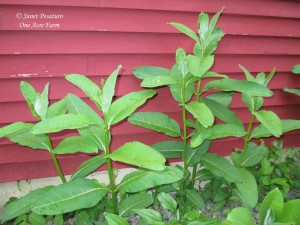
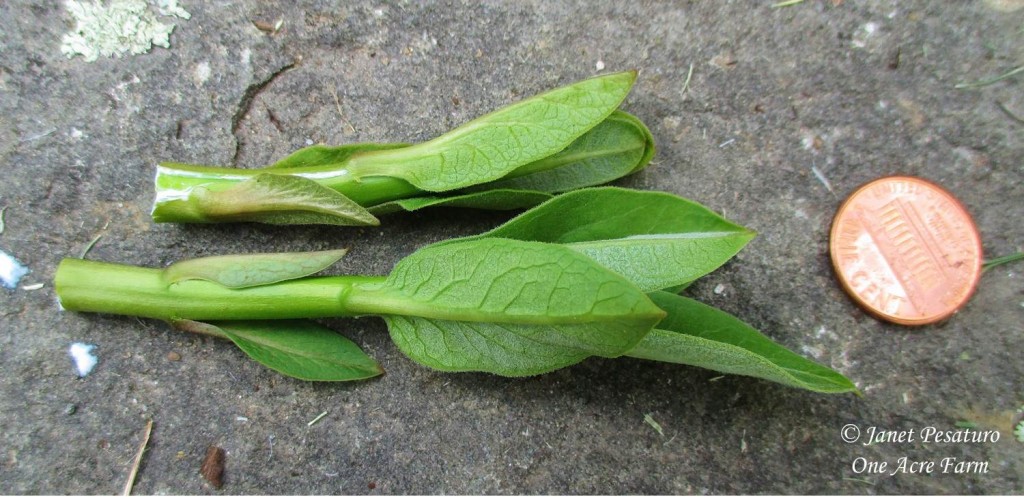
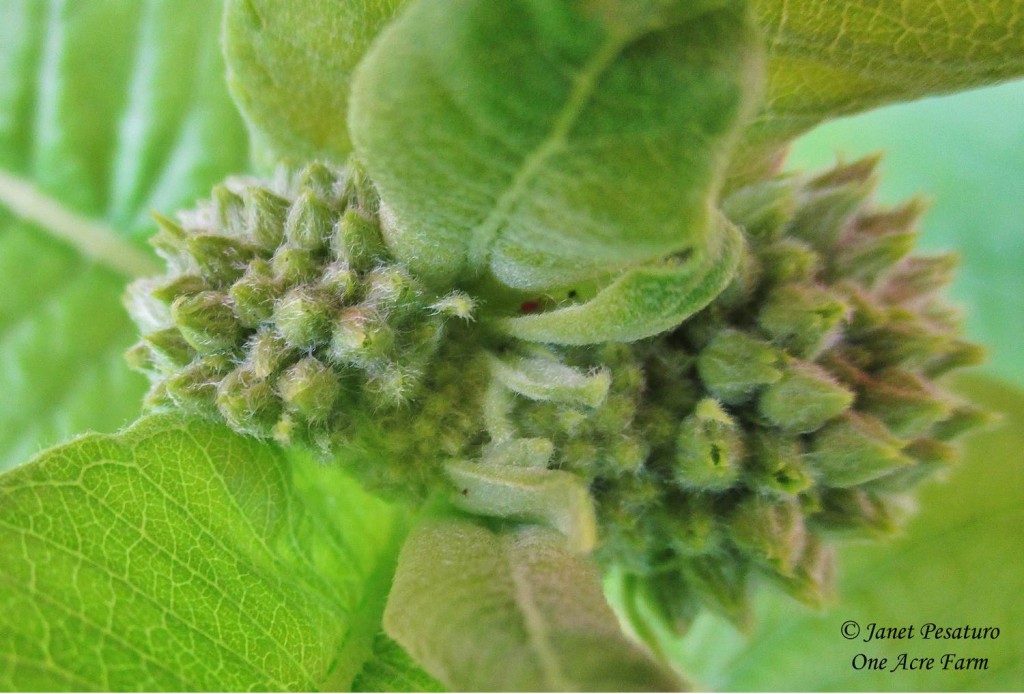
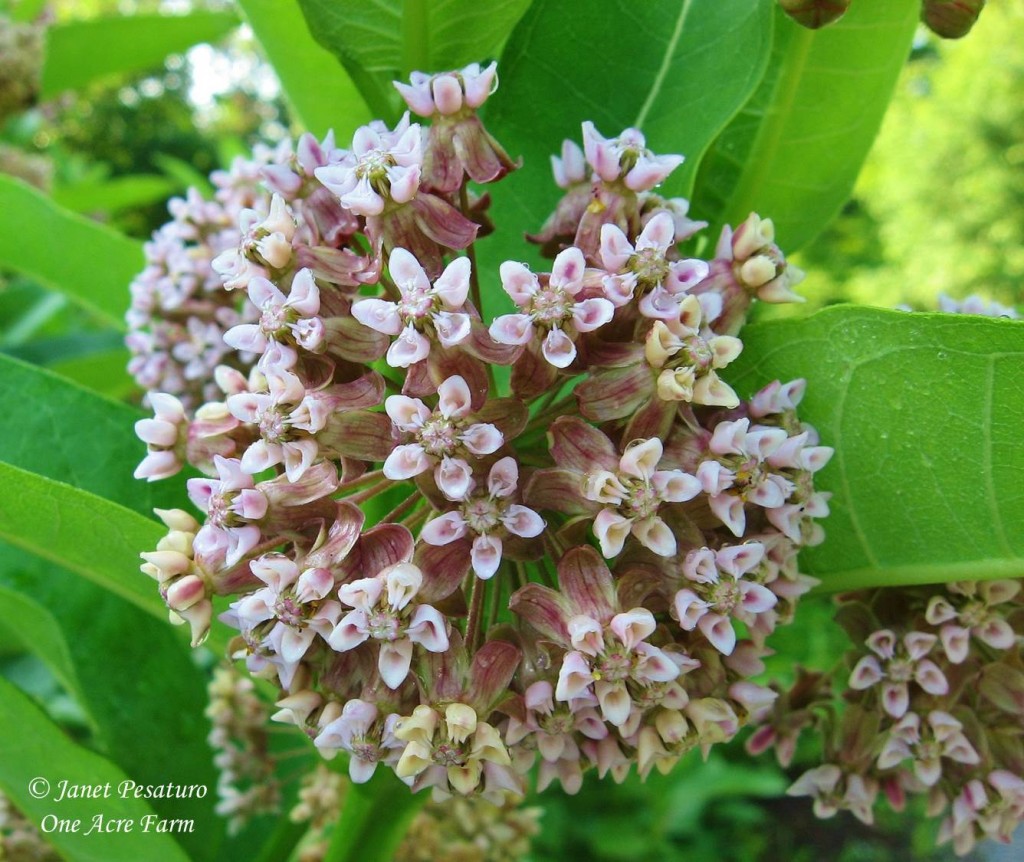
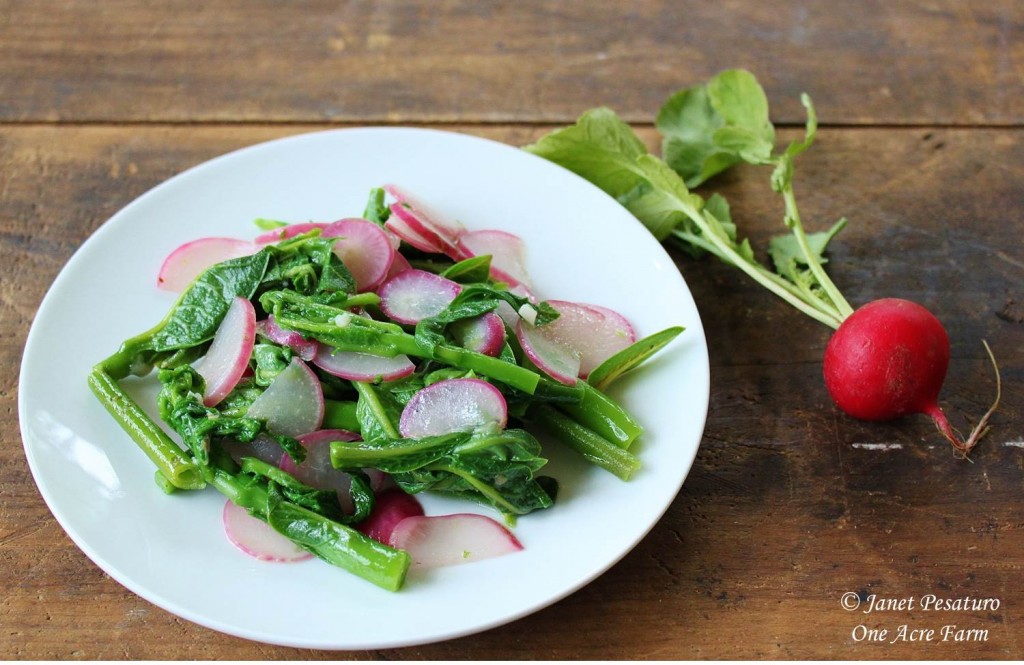
Yum! Milkweed is pretty much my favorite vegetable, but I especially love the florets (which we use in place of broccoli in our favorite stir-fry recipes) and the immature pods, especially the silk within them. If you can find a large field of milkweed, where foraging won’t make a dent in the population, I heartily recommend harvesting the young pods. If you scoop out the immature silk, you can use it like cheese (it melts just like a mild American cheese). A friend of mine gave me her milkweed and lambs-quarters casserole recipe, which I will be posting on my own blog later in the summer. (The only tricky thing about immature pods is that you have to cook them within about an hour of harvest, or they get tough.) In the meantime, I will make your milkweed radish salad, which sounds really yummy.
Thanks, Kellyann. Yes, I’ve read that the bud clusters and young pods are really tasty, but I can’t seem to bring myself to pick them. I can’t even pick the nasturtium flowers that I plant in my garden specifically for eating, because I just want to look at them. I’ll work on it though. And also am looking forward to your post on milkweed lambs-quarters casserole!
I finally posted that recipe! http://outoftheearth.wordpress.com/2014/08/06/foragers-casserole-easy-veganvegetarian/
Thanks for the pointer! Just pinned it to one of my wild edibles boards.
Oh, thank you!
I love this salad, so refreshing!
Love this post. We don’t have milk weed around here, but I hadn’t thought of planting it. What a great idea. I’ll look into that. Is there a specific kind of milkweed that Monarchs need or will any of them work?
Sharing this today.
Thanks, Chris! I don’t know if the larvae eat all species of milkweed, but they eat a lot of them. However, not all milkweeds grow in all parts of the continent. The only one that is abundant in my area is common milkweed. Also, many milkweeds are not edible for people. I am familiar with eating only common milkweed.
Thanks for sharing this post at the HomeAcre Hop!
Learn something new every day 🙂
Thanks for sharing this great recipe! It was chosen as a favorite on our From the Farm hop 🙂
Thank you, Dawn!!
Loved this article, Janet! I picked it as my feature for this week’s From the Farm Hop and you’re welcome to grab the feature button when you link up. Congratulations! On a side note, are you pinning to my Foraging and Wild Edibles board already? You’re very welcome to do so – I just pinned two of your posts there today and that seems like a sign! You’re welcome to pin to any of them, of course http://www.pinterest.com/homesteadlady/pin-to-our-group-boards/. FYI, those boards are Homestead Lady NOT From the Farm Hop. Cheers!
Thank you, Tessa!! Sure I would love to pin to both your foraging and homesteading boards, and just left you a message on each of those pins.
Pingback: From The Farm Hop 6/13/14 - Homestead Lady
I tried growing it from seed last year, which I got from an organization trying to promote monarch habitats. Nothing happened, and I forgot all about it. Lo and behold, this year a strange looking rubber plant thing started taking over a whole section of the flower garden. I had no idea what it was until I stumbled across your article. It’s late June and they are already four feet high. I love it when something new comes up. Looking forward to seeing what it does! If these are from seeds specifically for my part of the country (I remember I had to specify that I wanted for Massachusetts), are they definitely the edible kind? I’m not going to touch them this year, but maybe next. Thanks for the interesting article.
Pingback: Eat Milkweed, Help Save the Monarchs